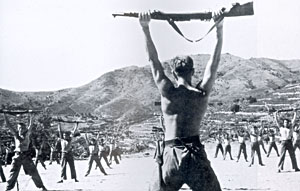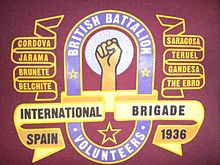By Elizabeth C. Goldsmith (Regular Contributor) and Arthur A. Goldsmith
Among this summer’s many dramatic international news stories, perhaps none stands out more prominently than the rise of the Islamic State of Iraq and Syria (ISIS)—a development aided by the presence of volunteer fighters from Europe, North America and even Australia. Few Western observers anticipated that so many young men (and this does seem almost exclusively a youthful male phenomenon) could be motivated to leave home and willingly risk their lives abroad in a violent political struggle in which they have no direct stake.
Explanations for today’s “armed tourism” often focus on contemporary globalization and technological innovations, especially social media, YouTube, smart phones, and increasingly realistic violent video games. Young people, it is said, spend too much time surfing the web. Modern aircraft make it easy for some of the misfits to escape to a war zone. But is armed tourism as novel as the conventional wisdom seems to believe?
 Ideological Travelers to Spain
Ideological Travelers to Spain
In fact, Parliamentary backbencher Winston Churchill coined the term “armed tourist” 80 years ago. He used it to refer to the international combatants then flocking to the Spanish Civil War—the 1930’s rough equivalent to today’s conflict in Iraq and Syria. Religious and political principles drove many of the fighters to Spain, although a desire for adventure and new experiences (as well as high unemployment) must have played a role as well. France’s military attaché in Madrid at the time, Lieutenant-Colonel Henri Morel came up with perhaps an even more apt term than Churchill did. He labeled the volunteers “voyageurs en idéologie.”
The ideological imperatives behind the Spanish Civil War were obviously quite distinct from today’s Islamist causes, but there are interesting parallels nonetheless. Nationalist rebels wanted to overthrow the constitutional republic in Spain. Armed tourists who joined this side of the fight frequently had ties to the Catholic Church or to local fascist organizations. Examples include the French Jeanne D’Arc unit, the Irish Brigade, and the Romanian Legion. Russians, Americans, Finns, Turks, Greeks, Cubans, and many others joined the Nationalist cause. The primary impetus seems to have been moral belief, although there were certainly many opportunistic mercenaries and adventurers among their ranks.
Volunteerism across the Ideological Spectrum
 Perhaps Spain’s best known ideological travelers fought against the Nationalists on the Republican side. Known as the International Brigade, numerous volunteer groups emerged that were committed to defending democracy in Spain. The American unit was the Abraham Lincoln Battalion. Other pro-Republican soldiers hailed from Britain and Brazil, Poland and Mexico, Russia and Yugoslavia—some fifty countries in all. Among their ranks were communists, anarchists, and social democrats.
Perhaps Spain’s best known ideological travelers fought against the Nationalists on the Republican side. Known as the International Brigade, numerous volunteer groups emerged that were committed to defending democracy in Spain. The American unit was the Abraham Lincoln Battalion. Other pro-Republican soldiers hailed from Britain and Brazil, Poland and Mexico, Russia and Yugoslavia—some fifty countries in all. Among their ranks were communists, anarchists, and social democrats.
State sponsors helped both the leftist and rightwing combat units, as is usually the case with private militias in our era, but the sponsors often lost control over their clients. In total over 60,000 people fought with the International Brigade between 1936 and 1939. Perhaps twice as many volunteers from around the world waged war on the Nationalist side. These numbers dwarf the international enlistment figures reported for ISIS and rival groups today.
As is the case among contemporary jihadists, factionalism was ever present with Spain’s volunteer militias. Historians still debate whether greater cohesiveness among the leftwing forces would have changed the outcome of the Spanish Civil War. Probably the decisive factor, however, was Germany and Italy’s direct intervention on behalf of the rebels.

For further reading: Hugh Thomas, The Spanish Civil War, rev. ed. (New York: Random House, 2001); Christopher Othen, Franco’s International Brigades: Adventurers, Fascists, and Christian Crusaders in the Spanish Civil War, rev. ed. (New York: Columbia University Press, 2013).

